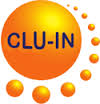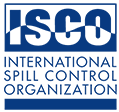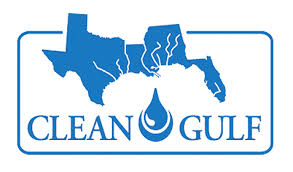Industry Links
METS BIOREMEDIATION
Bioremediation
still remains the most cost effective, reliable and natural solution
to fully remediate all contaminated soils.
METS offers a variety of bioremedial
solutions both aerobic and anaerobic through our vendor network to treat
almost any organic contaminant or multiple of contaminants.
What METS offers is a simplicity that
differs from traditional bioremediation, even using the same products listed,
by providing a
mechanically expanded surface area, metered and reliable application with
direct and immediate bio/contaminant contact.
METS can offer not only
immediate contact, but we apply up to 1 billion bacteria per gram of soil.
At those numbers, the contaminant is
overwhelmed and treated in days, where it had taken months or years
before.
Additionally, METS normally requires only a
single pass through the process, saving both time and money while providing a
permanent clean-up.
The “enhanced” or “E” in METS,
comes from the additional additives
of
air, nutrients, moisture and pH buffers to optimize the bioremedial agent(s)
selected.
Our METS enhancement offers a mechanical
boost to nature’s own solutions.
(for further information on METS bioremediation vendor
products, please click here)
(to have your bioremediation product considered for
use in the METS, please click here)
METS OXIDATION
Chemical oxidation
or Fenton’s Reagent Oxidation is a very effective method for treating low
level (100 ppm or less) contaminated soil and cleaning up to very low or
non-detect standards very quickly.
Again, while oxidation chemistry is known
and effective, it is normally cost prohibitive in any contaminant
concentrations higher than those listed.
This oxidative method can be
used in conjunction with METS Bioremediation in a tandem treatment regime to
handle the “lions share” of contamination with METS Bio and “polish” with METS
Oxidation.
METS makes oxidation chemistry more cost
efficient
by segregating the (normally) two reagents
until they are in direct contact with the contaminant making them more
effective as well.
The concepts of METS efficiency by increasing surface area and uniformly
applying the oxidative reagent across the soil/ matrix interface translate the
same in both METS Oxidation and METS Bioremediation.
(for further information on METS oxidation
vendor products, please
click here)
(to have your oxidation product considered for use in
the METS, please click here)
METS STABILIZATION
METS Stabilization
is very similar to chemical oxidation in that it requires a chemical and
catalyst to create a chemical reaction.
With regard to stabilization, this can be
accomplish with a chemical or bio reaction to “stabilize” the contaminant in
place.
By producing a chemical reaction with the selected
reagent/bio product, if the “total” number is low enough, by stabilizing or
reducing solubility, the material in now chemically inert state can remain on
site.
This method produces a twofold result, in that it
meets regulatory closure requirement and is expeditious to perform.
An example of this would be
to encounter a low level ionized lead such as pB++ and introduce a stabilizing
agent to produce a lead sulfide such as pBS which is not soluble (no longer a
threat to groundwater) and is exactly the same chemical structure as the mineral
Galena.
In many regions of the country/world, this mineral is
present as a natural “background” constituent and is accepted by regulators by
achieving these “background” numbers.
(for further information on METS stabilization vendor
products, please click here)
(to have your stabilization
product considered for use in the METS, please
click
here)
METS SOLUBIZATION
METS Solubilization
is the inverse of the Stabilization reaction described above, whereby we add a
reagent to increase the solubility of a contaminant, to flush from the soil,
using either of our proprietary solubilizing and collection
treatment systems, ie: WESTARR or our METS
“TCP” implemented on site for custom application.
Both systems are designed primarily for
soluble heavy metals, with cost and volume dictating which system/method to
use.
Again, both systems provide
“on site” cost efficient
and permanent solutions to potentially very
costly alternatives.
(for further information on METS solubilization vendor products, please
click here)
(to have your solubilization
product considered for use in the METS, please
click
here)
METS SURFACTANT REMEDIATION
In many cases, it is not
the contaminant that is the entire issue, but soil chemistry can play a huge
part in many clean-ups.
When you have an “ionized” or electrically
charged soil, such as clay, the contaminant can be electrically bonded or
attached to the soil.
In older spills/sites there may be enough
indigenous bacteria to treat the contamination present, but the contaminant is
not “bio available” for normal bio digestion/metabolization.
With the simple addition of
surfactant chemistry, the contaminant is “de-bonded” and digested without need
for any additional inoculation of bacteria.
This is by far the cheapest of all the METS
alternatives and the most natural, by fully utilizing the indigenous bacteria
present at the site.
(For further
information on METS surfactant vendor products, please
click here)
(to have your surfactant product considered
for use in the METS, please
click here)
WESTAR SURFACTANT / SOIL WASH
WESTARR Surfactant
Wash is a completely different process and concept than the METS
process listed above.
WESTARR or Wet Extraction Soil Treatment And
Resource Recovery, is a full immersion soil wash that utilizes surfactant not
only as a release agent but as a true physical surfactant converting petroleum
solids from soil or drill cuttings to liquid for surfacing and recovery. The
surfactants here differ somewhat in that they cannot negatively affect the oil
for re-refining and will dissolve/disperse in the refinement process.
WESTARR is specifically
designed to work primarily with petroleum hydrocarbons and drill cuttings or
contaminated soils in excess of 50,000 ppm.
There are several additional steps to WESTARR
from the Surfactant Wash, but the remaining steps are proprietary to bring the
contaminated media to full regulatory remediation.
When WESTARR is patented, these steps will be
publicly presented.
(for
further information on WESTARR Surfactant vendor products, please
click here)
(to have
your surfactant product considered for use in the WESTARR, please
click here)
TRADE ASOCIATIONS

Contaminated Site Clean-Up Information
 International
Spill Control Organization International
Spill Control Organization

Clean Gulf
REGULATORY AGENCIES

US
Environmental Protection Agency EPEA
 Florida
Department of Environmental Protection Florida
Department of Environmental Protection

California Environmental Protection Agency

California State
Water Resources Control Board
 Canada
Environment Canada
Environment
|

